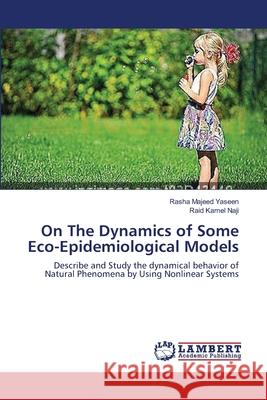On The Dynamics of Some Eco-Epidemiological Models » książka
On The Dynamics of Some Eco-Epidemiological Models
ISBN-13: 9783659440458 / Angielski / Miękka / 2013 / 144 str.
The dynamical behavior of some eco-epidemiological models is investigated. Two types of prey-predator models involving infectious disease in predator population, which divided it into two compartments; namely susceptible population and infected population, are proposed and analyzed. The first proposed model deals with SIS infectious disease that transmitted directly from external sources, as well as, through direct contact between susceptible and infected individuals using linear type of incidence rate. While, the second proposed model deals with SIS infectious disease that transmitted through the direct contact between susceptible and infected individuals only using nonlinear type of incidence rate. Both the models are represented mathematically by the set of nonlinear differential equations. The existence, uniqueness and boundedness of the solution of these two models are investigated. The local and global stability conditions of all possible equilibrium points are established. The occurrence of local bifurcation and Hopf bifurcation near each of the equilibrium points are discussed. Finally, numerical simulation is used to study the global dynamics of the both models.
The dynamical behavior of some eco-epidemiological models is investigated. Two types of prey-predator models involving infectious disease in predator population, which divided it into two compartments; namely susceptible population and infected population , are proposed and analyzed. The first proposed model deals with SIS infectious disease that transmitted directly from external sources, as well as, through direct contact between susceptible and infected individuals using linear type of incidence rate. While, the second proposed model deals with SIS infectious disease that transmitted through the direct contact between susceptible and infected individuals only using nonlinear type of incidence rate. Both the models are represented mathematically by the set of nonlinear differential equations. The existence, uniqueness and boundedness of the solution of these two models are investigated. The local and global stability conditions of all possible equilibrium points are established. The occurrence of local bifurcation and Hopf bifurcation near each of the equilibrium points are discussed. Finally, numerical simulation is used to study the global dynamics of the both models.











